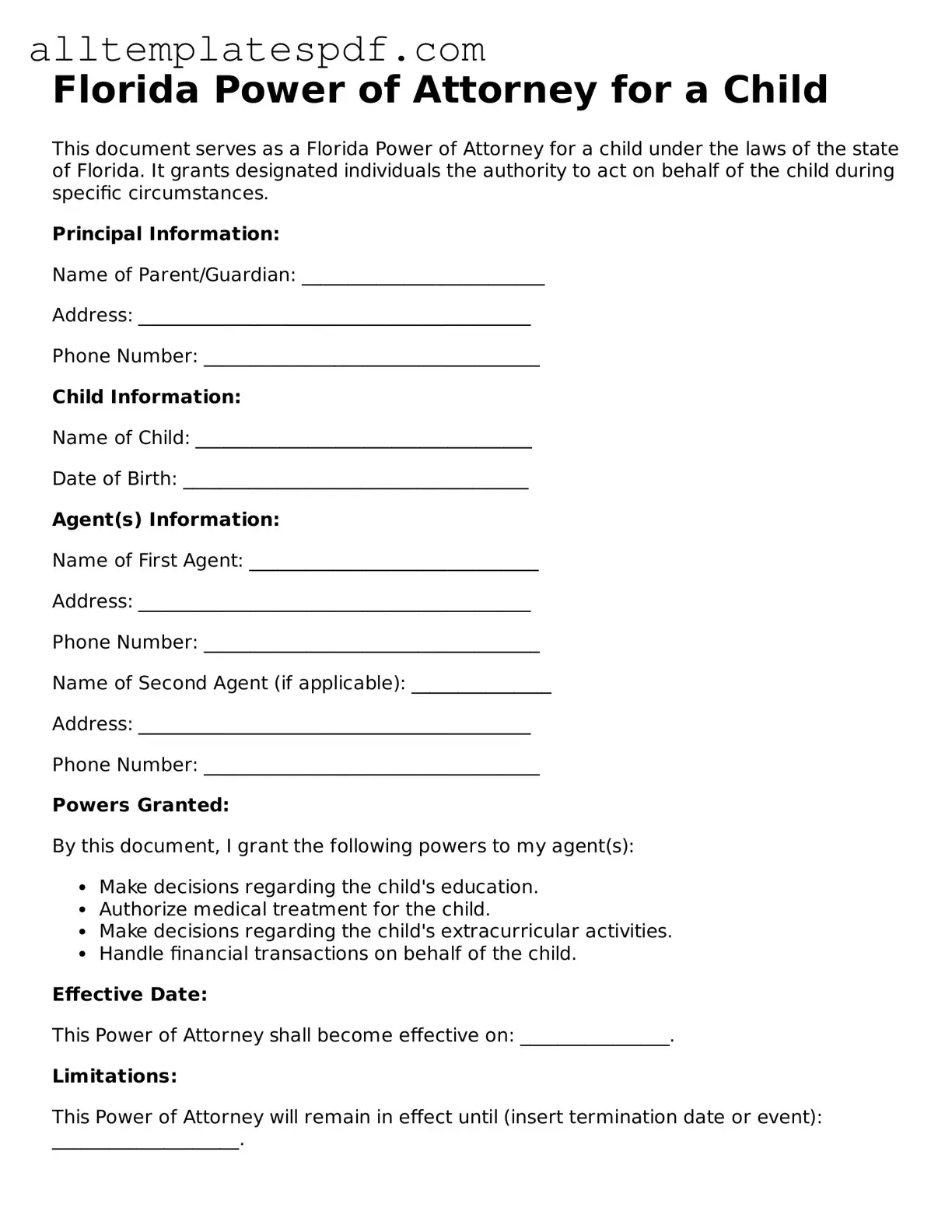Blank Power of Attorney for a Child Template for the State of Florida
The Florida Power of Attorney for a Child form is a legal document that allows a parent or guardian to grant another adult the authority to make decisions on behalf of their child. This form is particularly useful in situations where the parent is unable to care for their child temporarily, such as during travel or medical emergencies. Understanding its importance can help ensure that your child's needs are met even in your absence.
If you're ready to take this important step, fill out the form by clicking the button below.
Open Editor
